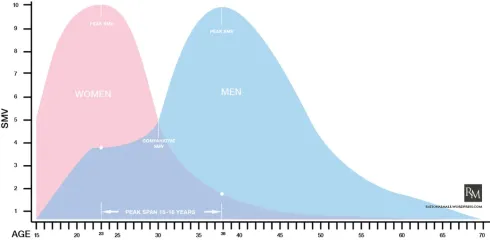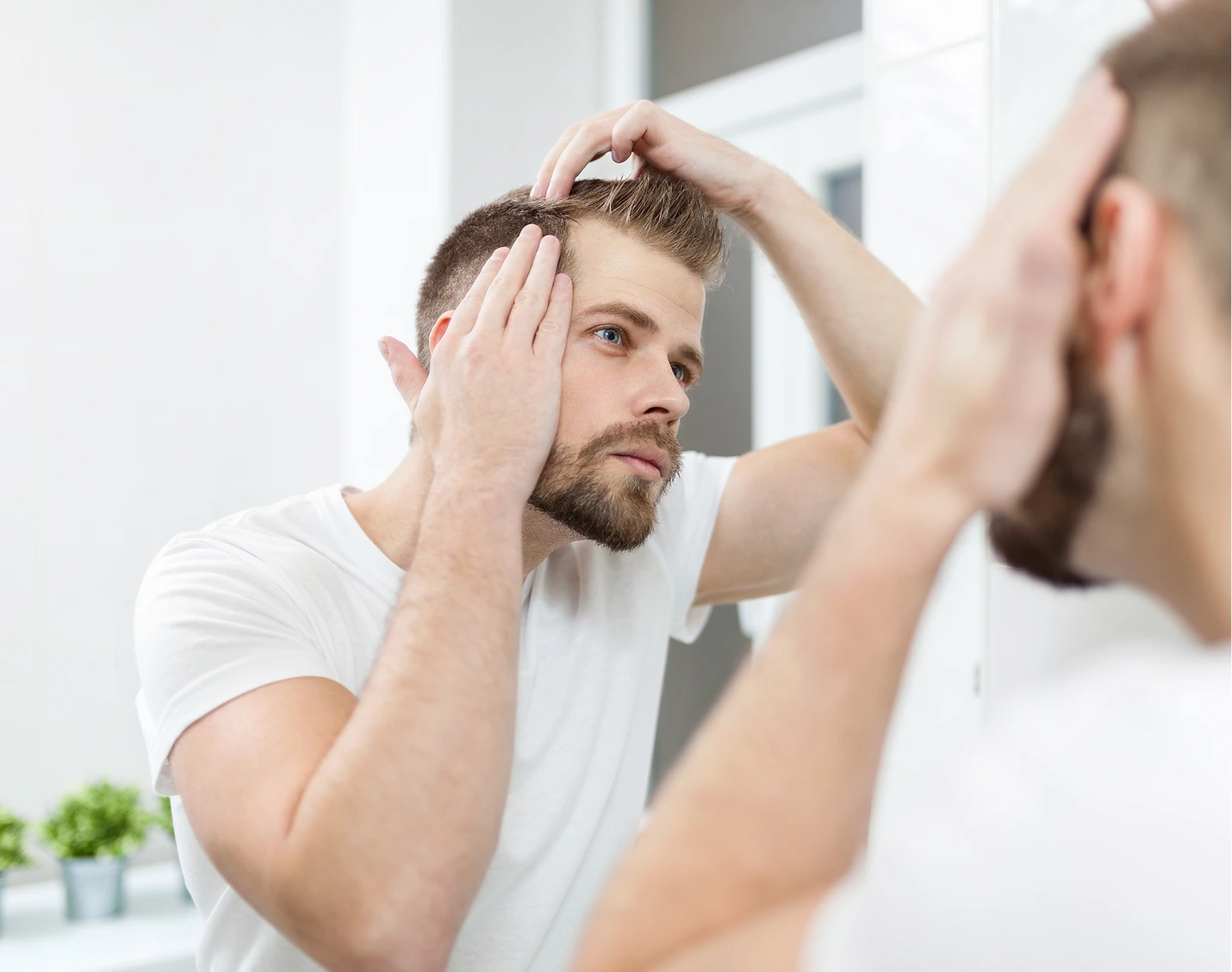Table of Contents
The answer is more complicated than it seems. Jeff Bezos and The Rock have made baldness look powerful, but not everyone is built like a WWE champion or owns Amazon. For the average man, thinning hair might feel like a disadvantage, and the numbers back this up. Studies show that women consistently rate men with full heads of hair as more attractive than their balding counterparts. And while that’s unfortunate, it doesn’t stop there—the consequences trickle into career advancement, social status, and even self-perception. So, is baldness the new obesity? Or can young men flip the script on what it means to lose their hair?
Understanding Hair Loss
Androgenic Alopecia: Also known as male pattern baldness or female pattern hair loss, this is the most common type of hair loss. It occurs due to the conversion of testosterone to dihydrotestosterone (DHT), which causes hair follicles to shrink and eventually stop producing hair. This type of hair loss often results in a receding hairline and thinning hair on the crown.
Alopecia Areata: This autoimmune disease causes patchy hair loss on the scalp or other parts of the body. The immune system mistakenly attacks hair follicles, leading to sudden hair loss in small, round patches.
Telogen Effluvium: This condition leads to excessive hair shedding due to stress, hormonal changes, or certain medical conditions. It typically results in diffuse thinning hair across the scalp rather than localized bald spots.
Traction Alopecia: Caused by constant pulling or tension on the hair follicles, this type of hair loss is often due to hairstyles like braids, ponytails, or extensions. Over time, the stress on the hair shaft can lead to permanent hair loss if not addressed.
Hair loss can progress through different stages:
Thinning Hair: The earliest stage, where hair becomes less dense and more fragile.
Receding Hairline: Common in male pattern baldness, this stage is characterized by the hairline moving back, forming an “M” shape.
Balding: The most advanced stage, where significant areas of the scalp are completely devoid of hair.
Understanding these types and stages of hair loss is crucial for choosing the right treatment. Options may include medications, hair transplantation, and lifestyle changes, all aimed at preserving and restoring hair growth.
The Attractiveness Bias: Does Male Pattern Baldness Hurt Your Chances?
The Sexual Marketplace Value Gap: Timing Matters
The SMV of men and women has long been a topic of debate, often framed in evolutionary terms. A now-infamous chart from a 2012 blog post by The Rational Male (authored by Rollo Tomassi) illustrates a supposed gap: women peak in their early 20s, while men hit their stride in their mid-30s. Here’s the chart in question:

“Personally I think this presumption is fraught with individual bias, both intended and unintended. And make no mistake, I’m about to define the SMP and sexual market values (SMV) from my own perception, but I fully recognize the want for defining these dynamics in a clear, understandable format, so I’ll beg forgiveness for this indulgence.”
In other words, the chart reflects his personal take, not hard data—a stylized illustration of a broader idea: that men peak in mate value later than women.
The New Era of Beautification: Why Men Are Fighting Back with Hair Transplant Surgery
For decades, hair loss was seen as something men had to simply accept. But in an age of medical advancements and aesthetic procedures, that’s no longer the case. The modern man has options, and he’s not afraid to use them.
Hair transplant surgery, once a procedure reserved for the ultra-wealthy or TV personalities, has become increasingly mainstream. For those dealing with hereditary hair loss, treatment options like low-level laser therapy and hair transplant surgery are available. Fueled by advancements in Follicular Unit Extraction (FUE) technology, which involves the precise harvesting of each hair follicle, today’s transplants look natural and require minimal downtime. Robotic hair restoration, using FDA-approved technologies like NeoGraft and ARTAS, further enhances the effectiveness of these procedures. Some of the most prominent figures in politics and entertainment—Joe Biden, Elon Musk, and even machine-gun baldness advocate Jason Statham—have allegedly gone under the knife to maintain their youthful edge. Individual grafts containing just a few hairs are meticulously implanted to ensure a natural appearance. The success of these procedures heavily depends on the viability of the transplanted hair, which, when done correctly, blends seamlessly with the existing hair.
Then there’s medication. Finasteride (Propecia) and minoxidil (Rogaine) have become the go-to choices for men looking to slow or reverse hair loss. Yet, many young men hesitate due to horror stories of sexual dysfunction, loss of libido, or other side effects. And while studies show these side effects are rare, they’re talked about enough to make some men second-guess whether keeping their hair is worth the risk.
Finally, there’s the full-shave solution, where men embrace the bald look entirely. It’s a bold move, one that’s worked wonders for men like The Rock and Jeff Bezos. But let’s be real: being bald and jacked works for them because they’re physically imposing. The average guy may not have the muscle mass or financial empire to compensate for the lack of hair, making the “just shave it” advice feel overly simplistic.
Is Thinning Hair the New Obesity?
Society has tried to reframe beauty standards before. The push for body positivity has challenged the traditional preference for leaner physiques, promoting the idea that bigger bodies should be celebrated. But while this message is widely accepted in theory, dating preferences tell a different story—men, by and large, still prefer women with traditionally fit figures, even if they won’t say it out loud.
Baldness may be experiencing a similar moment. There’s an effort to normalize it, to portray it as a sign of confidence rather than a disadvantage. And to some degree, it’s working—bald actors, athletes, and CEOs are often seen as strong, competent, and self-assured. But deep down, even those men would likely admit they’d prefer to have hair if they could. However, treatments for hair loss, such as minoxidil and finasteride, can sometimes lead to unwanted hair growth as a side effect.
Maintaining Good Health for Healthy Hair
Maintaining good health is essential for promoting healthy hair growth. A balanced diet, regular exercise, and effective stress management can all contribute to healthier hair. Here are some practical tips to help you maintain good health for optimal hair growth:
Eat a Balanced Diet: Your hair needs a variety of nutrients to grow strong and healthy. Incorporate foods rich in vitamins and minerals, particularly those that promote hair growth like biotin, vitamin E, and omega-3 fatty acids. Think leafy greens, nuts, seeds, and fatty fish.
Stay Hydrated: Drinking plenty of water is crucial for keeping your hair follicles healthy. Hydration supports the hair shaft and promotes overall hair growth.
Exercise Regularly: Physical activity helps reduce stress and improves overall health, both of which are beneficial for your hair. Aim for at least 30 minutes of moderate exercise most days of the week.
Manage Stress: High stress levels can contribute to hair loss. Find ways to manage stress, such as through meditation, yoga, or other relaxation techniques. Reducing stress can help maintain healthy hair growth.
Get Enough Sleep: Adequate sleep is essential for overall health and can also promote healthy hair growth. Aim for 7-9 hours of quality sleep each night to support your body’s regenerative processes.
Biotin Supplements: Biotin, a B-complex vitamin, is essential for hair growth. It supports the production of keratin, a key protein in hair.
Vitamin E Supplements: Vitamin E is an antioxidant that helps protect hair follicles from damage and promotes hair growth.
Minoxidil: This topical medication is applied directly to the scalp to stimulate hair growth and slow hair loss.
Finasteride: Taken orally, this medication helps reduce hair loss and promote hair growth by inhibiting the conversion of testosterone to DHT.
Before starting any new supplements or medications, it’s essential to consult with a healthcare professional to ensure they are safe and effective for you. By taking a holistic approach to your health, you can support healthy hair growth and maintain a full, vibrant head of hair.
The Bottom Line: Play the Game, Don’t Fight It
Peak Masculinity
Starts Here

By Dr. Ryan Welter
August 16, 2025




